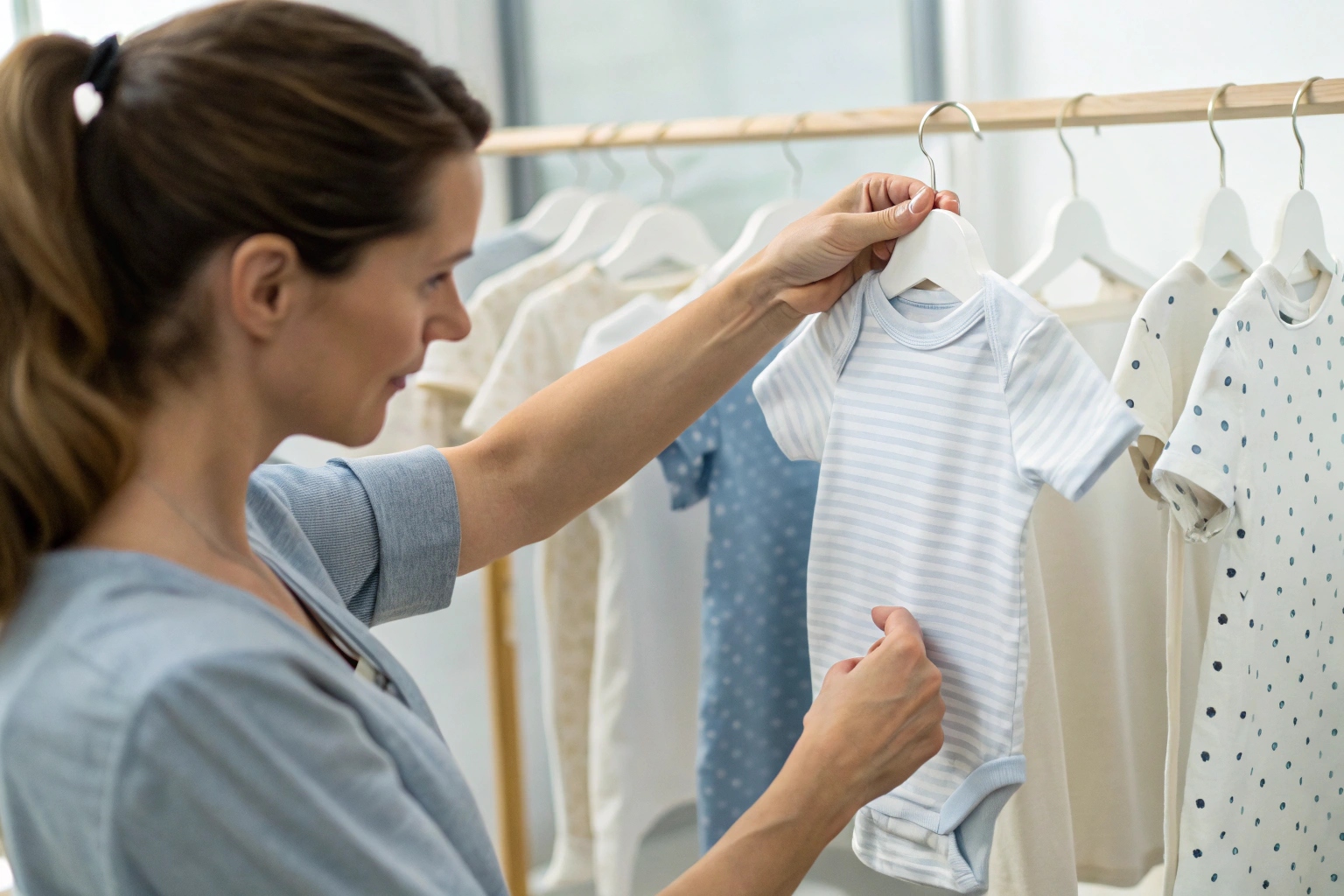Organic fabric is a top priority for many parents—but spotting it on the label isn’t always as simple as it seems.
To identify organic fabric in baby clothing, check for credible certifications, read fiber composition carefully, compare fabric textures, and stay alert to misleading greenwashing terms.
In this guide, I’ll show you how to confidently choose safe, authentic organic babywear—so you can protect both your baby and your brand’s reputation.
What Labels and Certifications Prove Organic Fabric?
Seeing the word “organic” on a label doesn’t mean it’s verified. What truly proves it is a third-party certification.
Trusted organic certifications like GOTS and OEKO-TEX® confirm that a fabric is grown, processed, and finished without harmful chemicals.
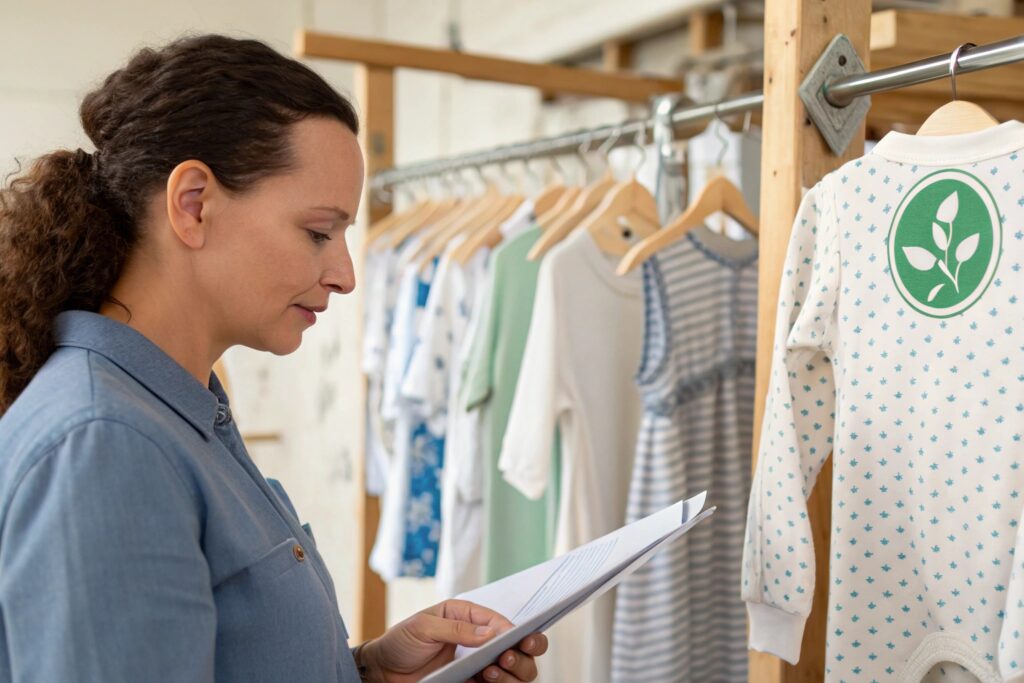
What are the most reliable certifications for organic babywear?
Here’s a list of the most credible certifications:
| Certification | What It Confirms |
|---|---|
| GOTS (Global Organic Textile Standard) | Organic fiber + non-toxic dyes + ethical labor |
| OEKO-TEX® Standard 100 | Free from harmful substances, safe for babies |
| OCS (Organic Content Standard) | Verifies organic fiber percentage only |
| USDA Organic | Organic farming (rare for finished apparel) |
The GOTS logo is your best guarantee—it covers not just the cotton, but the entire process, from harvest to final sewing.
At Fumao, we use GOTS-certified fabric for clients who need babywear lines sold in premium organic stores or eco-conscious online shops.
How can you confirm that a product’s certification is real?
Here’s what to do:
- Look for the certification logo and license number on the tag or packaging
- Check the brand or supplier on the GOTS public database
- Request a transaction certificate from your supplier
- Ask the brand to provide the original test certificate (they should have it)
If a brand says “GOTS-certified cotton” but can’t show proof—proceed with caution.
How to Read Fabric Composition Tags Accurately?
Fabric tags are required on baby clothing—but not all tags clearly say whether a material is organic.
Check fabric composition tags for 100% organic cotton, and watch for language that includes key words like “certified organic” or “GOTS.”
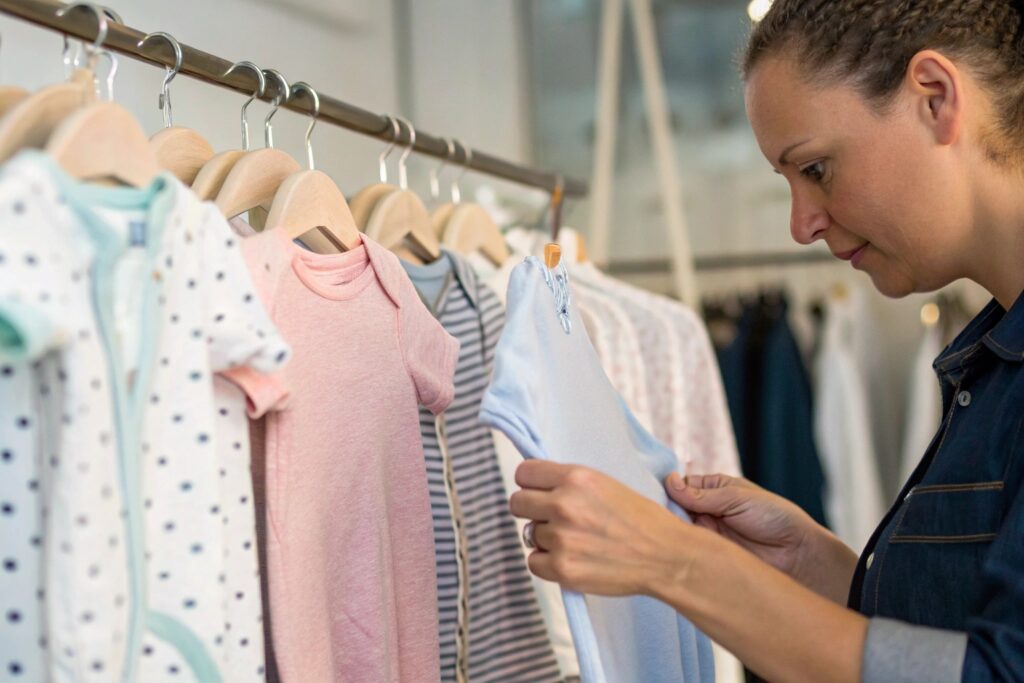
What should you look for on fabric composition labels?
Here’s how to read them:
| Tag Example | What It Means |
|---|---|
| “100% Organic Cotton” | Best case—likely certified if paired with logo |
| “Organic Cotton Blend (60/40)” | Only partially organic—check percentage |
| “Cotton (organic)” | Needs more detail—ask for certificate |
| “Cotton” or “Natural Cotton” | Likely conventional unless otherwise stated |
The more specific the tag, the better. Generic “cotton” or “natural” wording often hides non-organic origins.
What legal rules apply to fabric labeling in the U.S.?
According to Federal Trade Commission (FTC) guidelines:
- Brands can’t claim “organic” unless the fiber meets USDA or GOTS standards
- If only part of the product is organic, the label must clearly state the percentage
At Fumao, we ensure all packaging and inside tags meet U.S. fiber-labeling laws—especially for certified organic babywear lines.
Common Differences Between Organic and Conventional Cotton?
Organic and conventional cotton may look similar, but they feel, wear, and process very differently—especially over time.
Organic cotton is usually softer, less processed, and grown without toxic pesticides—making it safer for baby skin and better for the planet.
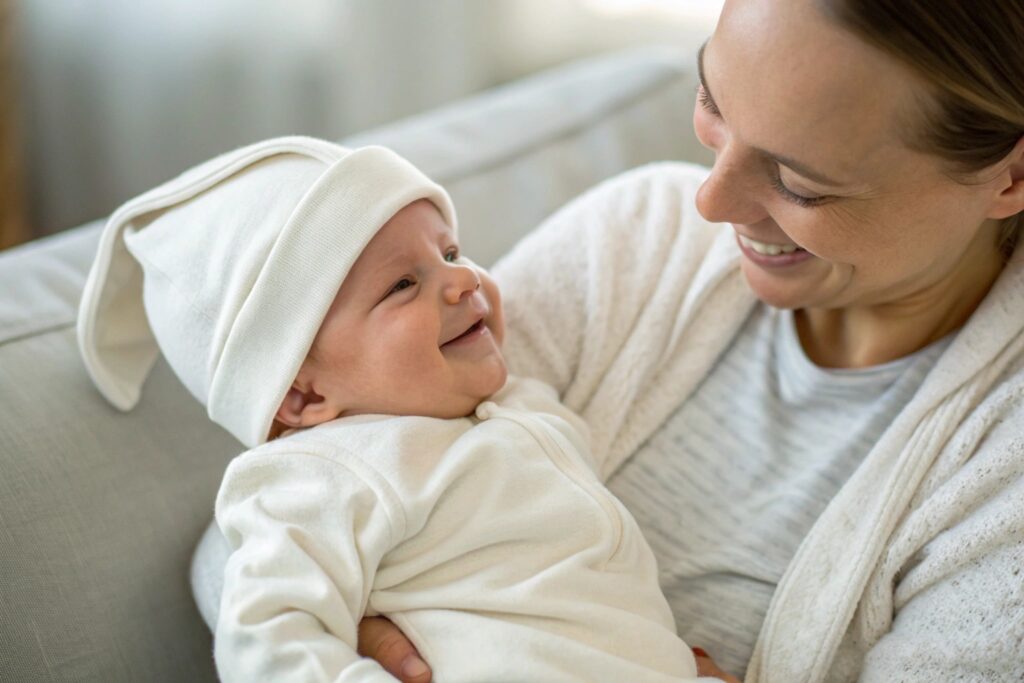
What physical or performance differences can you feel?
Here’s a quick comparison:
| Feature | Organic Cotton | Conventional Cotton |
|---|---|---|
| Texture | Softer, smoother | May feel stiff or waxy initially |
| Color | Slightly off-white, natural tone | Bright white (often bleached) |
| Shrinkage | Slightly higher (not chemically fixed) | Lower due to added softeners |
| Breathability | Better airflow | Varies depending on treatment |
| Durability (after wash) | Softer with age, holds shape | May pill or thin more quickly |
Parents who switch to organic often say their baby’s skin irritation or rashes improve after the change. That’s not a coincidence.
What about the environmental and ethical impact?
Organic farming uses:
- No synthetic pesticides or GMOs
- Less water in cultivation
- Natural crop rotation to protect soil
- Safer conditions for farm workers
For baby brands, choosing organic doesn’t just protect the baby—it’s part of telling a bigger story about care, ethics, and sustainability.
Tips to Avoid Misleading “Natural” Fabric Claims?
The word “natural” is unregulated—and often misused. Not all “eco” or “green” claims mean a product is organic or safe for babies.
Avoid greenwashing by steering clear of vague labels, asking for proof, and learning which words mean nothing without certification.
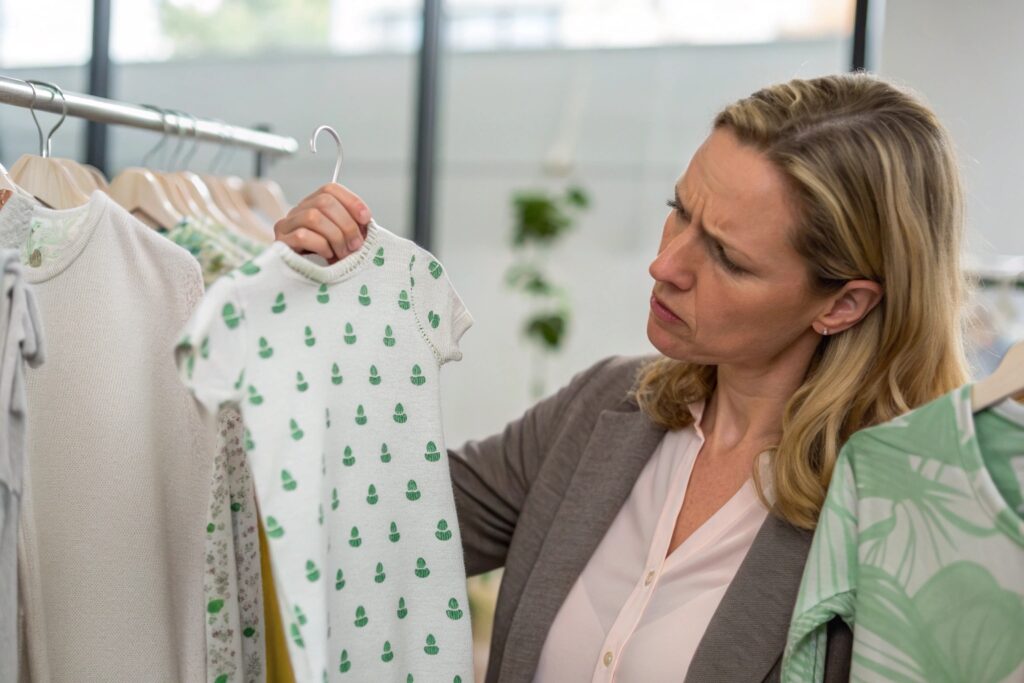
What misleading terms should you watch out for?
Here are some red flags:
| Misleading Term | Why It’s Not Enough |
|---|---|
| “Eco Cotton” | No clear meaning—could be conventional |
| “Sustainable Fiber” | Vague—check if certified |
| “All Natural” | Can include chemically treated fabrics |
| “Conscious Collection” | Marketing phrase, not a standard |
| “Plant-Based Material” | Could still involve chemical processing |
These terms often appear on fast fashion labels that want to sound “green” without making real changes.
How can you protect your brand (or baby) from false eco claims?
Do this before buying or sourcing:
- Ask for certification documents (GOTS, OEKO-TEX®)
- Verify tag claims with actual supplier records
- Partner with factories that provide fabric test results
- Learn the fiber origin + processing steps (especially for blends)
- Choose vendors who are open about sourcing, not secretive
At Fumao, we only label fabric as organic if we can show original certification from yarn mill to sewing line. That builds real trust—no greenwashing, no guesswork.
Conclusion
Identifying organic fabric in baby clothing is about more than reading a tag. With the right knowledge of certifications, fiber labels, and red flags, you can confidently choose safe, authentic organic products for your baby—or your brand.

